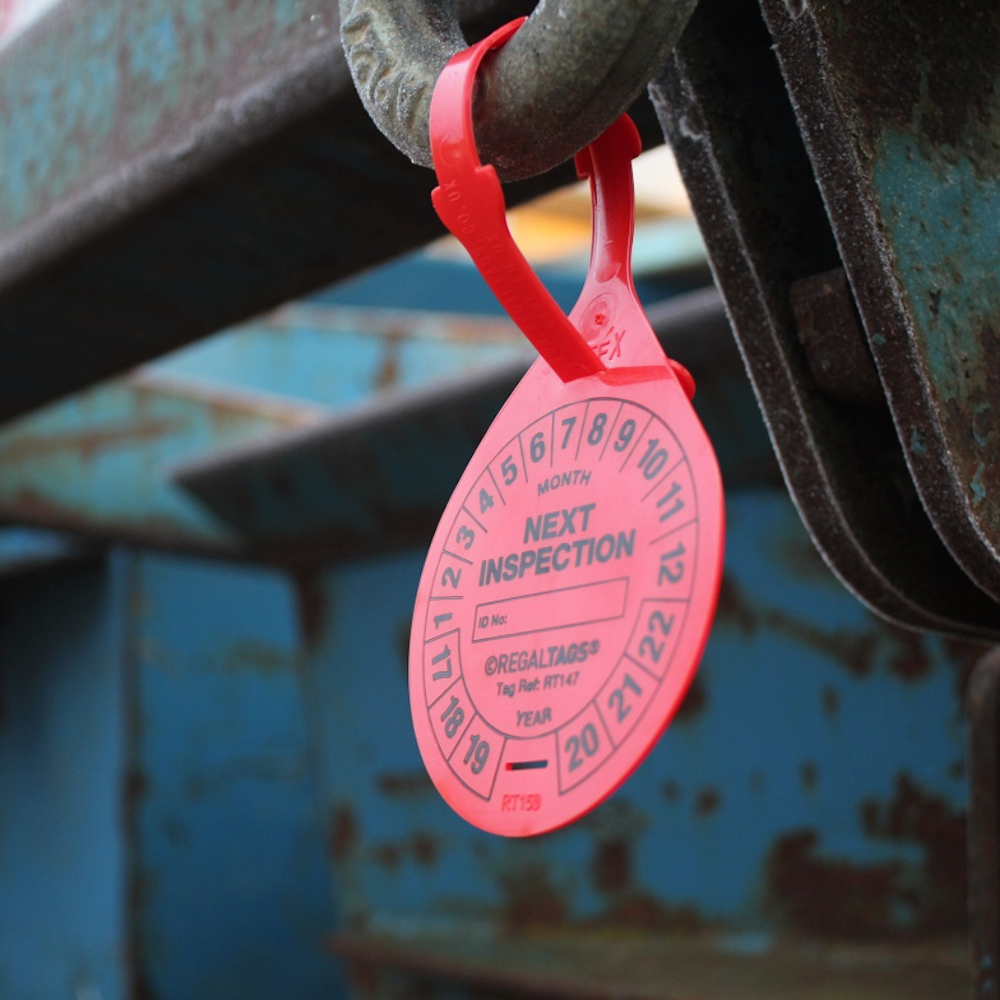Creating an Effective Inspection Tag System: Best Practices
In this blog, we will explore the best practices for creating a comprehensive and efficient inspection tag system.
In various industries, the implementation of a robust inspection tag system is crucial for maintaining safety standards, compliance, and overall operational efficiency.
An effective inspection tag system helps organisations track and manage inspections, ensuring that equipment, facilities, and processes are regularly assessed for safety and functionality.
In this blog, we will explore the best practices for creating a comprehensive and efficient inspection tag system.
Types of Inspection Tags
Inspection tags come in various types, each designed to serve specific purposes across different industries and applications. The choice of inspection tag depends on the nature of the inspection, the information to be conveyed, and the environment in which it will be used.
At REGALTAGS we offer:
- Lifting inspection tags
- Scaffolding tags
- Ladder inspection tags
- Gas cylinder tags
- Harness tags
- Hand-arm vibration tags
- Portable Appliance Testing (PAT) tags
- Hire tags
- ATEX/EX inspection tags
If you’d like to learn more, check out our Comprehensive Guide to Inspection Tags.

How to Create an Inspection Tag System Successfully?
Creating a successful inspection tag system requires careful planning, attention to detail, and a commitment to continuous improvement. Here REGALTAGS’ best practices for establishing an effective inspection tag system:
Clearly Define Inspection Criteria
The first step in establishing an effective inspection tag system is to clearly define the inspection criteria. Identify key elements that need regular evaluation, such as:
- equipment conditions
- safety features
- compliance requirements
This clarity ensures that inspections are focused and targeted, addressing specific aspects critical to the organisation's operations.
Standardise Inspection Procedures
Standardising inspection procedures is essential for consistency across different departments and locations. Develop a set of standardised inspection protocols that clearly outline the steps to be taken during inspections.
This ensures that all personnel involved in inspections follow the same guidelines, reducing the risk of oversight or misinterpretation.
Establish a Regular Inspection Schedule
Consistency is key in maintaining a safe and compliant working environment. Establish a regular inspection schedule based on the criticality of the equipment or processes being evaluated.
This schedule should be realistic, considering the workload of inspection teams and the operational needs of the organisation.
Contact us
We're just a call or click away.
Fill in the form below for direct contact with our team. We'll respond very shortly!
Clearly Label Inspection Tags
The physical inspection tag is a vital component of the system. Ensure that inspection tags are clearly labelled with relevant information, including the date of the last inspection, the next scheduled inspection, and any specific instructions or findings. Standardise tag formats to enhance readability and understanding.
Implement a Notification System
To avoid missed inspections, implement a notification system that alerts responsible personnel when inspections are due. This can be achieved using calendar reminders, email notifications, or integrated alerts within digital inspection tools. Timely notifications help organisations stay on top of their inspection schedules.
Analyse and Act on Inspection Data
Collecting inspection data is only valuable if organisations analyse the information and take appropriate actions. Implement a system for reviewing and analysing inspection results, identifying trends, and addressing recurring issues.
This proactive approach helps prevent potential safety hazards and ensures continuous improvement in operational processes.

Inspection Tags from REGALTAGS
Creating an effective inspection tag system involves a combination of clear guidelines, standardised procedures, technology integration, and continuous training.
At REGALTAGS, we offer a comprehensive range of high-quality inspection tags designed to streamline and enhance various inspection processes. Our inspection tags are highly durable and can be fully customised to meet the needs of your equipment inspections.
If you’re looking for inspection tags that you can rely on, get in touch with our expert team at REGALTAGS today – we’re just a call or click away.
Subscribe
Join 10,000+ others receiving our monthly updates. Free Tag knowledge delivered straight to your inbox.





